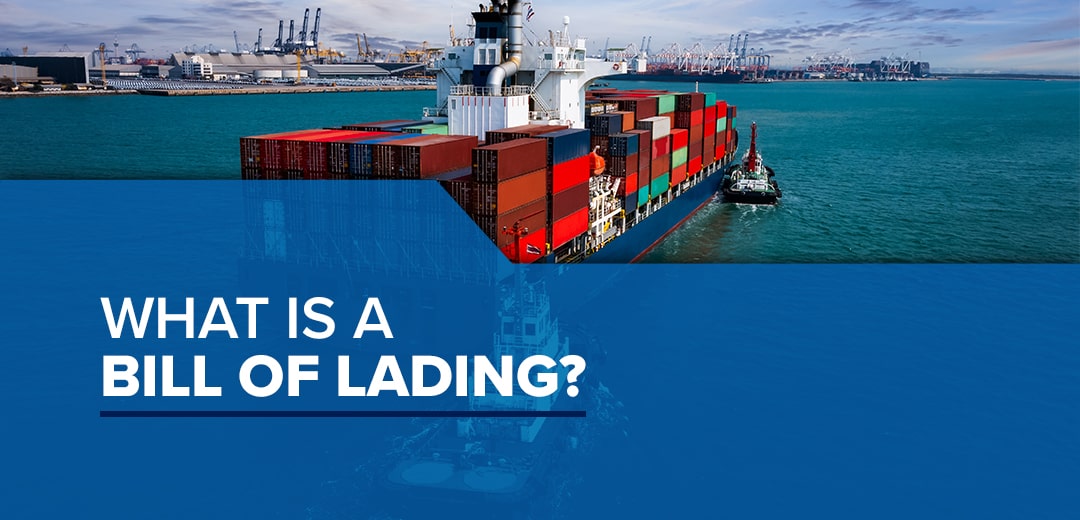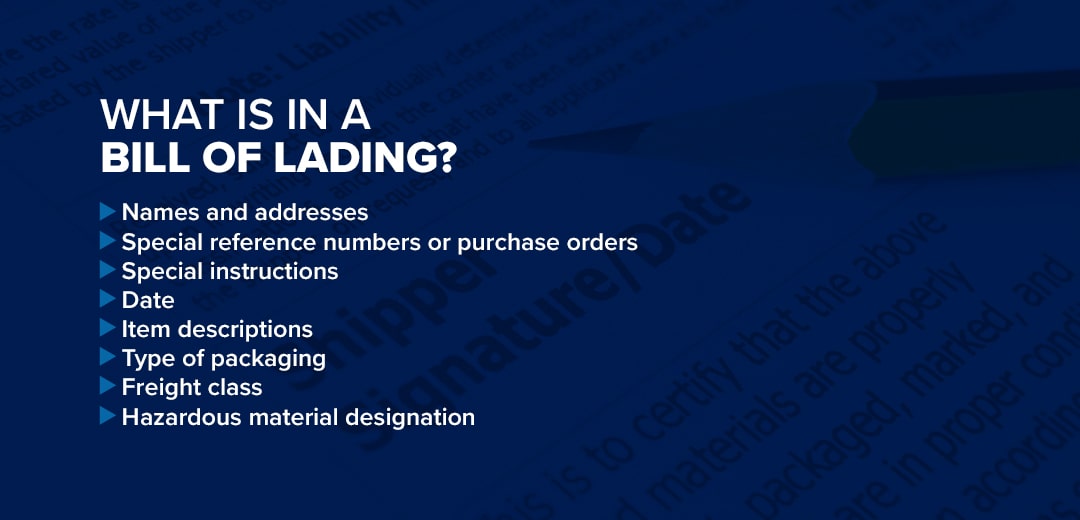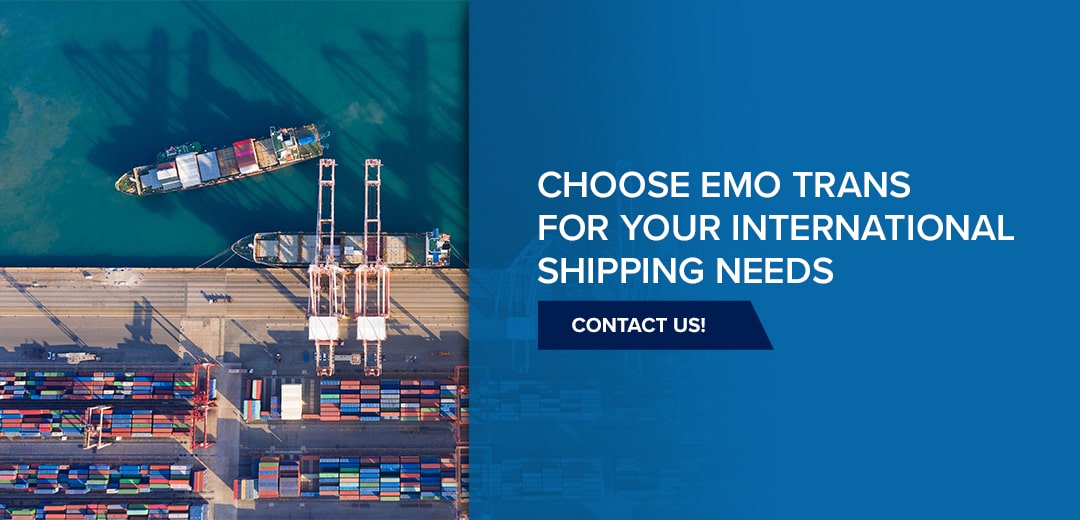
Shipping products internationally can be an involved process. You have to fill out the proper paperwork and make appropriate shipping choices to get the best value possible. But you also need to protect yourself and the receiver if anything goes wrong. Various documents exist to protect involved parties when completing an international shipping transaction.
As you research ways to ship your products internationally, you may have seen or heard the term “bill of lading.” But what is a bill of lading in shipping? Since a bill of lading is one of the most important documents in the entire international shipping process, you should know what it is and what it is for.
Definition of a Bill of Lading
A bill of lading is a document that includes essential information regarding the shipping of goods via sea or other transportation methods. Carriers require bills of lading for all their shipments because they serve as the following:
- The receipt of freight services
- The contract between the shipper and the freight carrier
- The document of title or ownership of the received goods
The purposes above are essential to having a smooth transaction from start to finish. The bill of lading is a legally binding document that ensures the carrier and shipper process the freight shipment correctly and invoice it appropriately for their records.

What Is in a Bill of Lading?
A bill of lading includes the following crucial information:
- Names and addresses: Every bill of lading must include the full names and addresses of the receiver and the shipper. Each should be legible and clearly displayed.
- Special reference numbers or purchase orders: Your business may need these numbers for future reference or to release freight for accepted delivery or pickup.
- Special instructions: Some packages require special directions for carriers to follow, including notifications of delivery or liftgate procedures.
- Date: The pickup day must be displayed on the bill of lading. Involved parties may need to know this date to reconcile shipping invoices or track shipped freight.
- Item descriptions: This description can include the number of units in the shipment, the freight’s weight and dimensions, plus any other information about the material of the goods. Descriptions about fragility may also appear here.
- Type of packaging: This information lets involved parties know whether the shipper is using crates, drums, cartons or pallets to ship the goods.
- Freight class: Freight classes affect the shipping cost. There are 18 classes. The class for your shipment depends on its dimensions, storage capability, density, weight, handling ease, liability and value.
- Hazardous material designation: All shipments containing hazardous materials must have clear labeling on the bill of lading so the carrier can follow all special requirements and rules during the shipping process.
Bill of Lading Example
Picture a fine dining restaurant that receives shipments of high-quality meats and fish five times a week, once per day. The restaurant manager will order the quantity of these ingredients that the restaurant needs. The manager will fill out a purchase order, and then the restaurant owner will review the purchase order and sign it before sending it to the food vendor. The food vendor will gather the ordered ingredients and then sign a bill of lading with the overnight carrier.
Once the carrier reaches the restaurant with the ordered ingredients, the manager will compare the purchase order with the items listed on the bill of lading. If all items are correct, the manager will send the purchase order and the bill of lading to the restaurant owner, who will review the documents and write a check to the food vendor.
Why Is a Freight Bill of Lading Important?
A bill of lading is important because it is a legally binding document that gives the shipper and carrier all the details they need to accomplish a successful shipment. Because of the legal significance of a bill of lading, any involved parties who want to achieve the highest accuracy possible regarding the shipment can use it in litigation scenarios.
Put simply, a bill of lading is an indisputable legal document that provides proof of shipment. And because the bill of lading clearly defines the three parties involved — the shipper, the carrier and the receiver — it can help with the segregation of duties within an organization.
Negotiable vs. Non-Negotiable Bills of Lading
As you encounter bills of lading, you may hear about negotiable and non-negotiable versions. Here are the differences between the two so you can navigate your shipping situation correctly:
- Negotiable bills of lading: The receiver must present the original bill of lading to the carrier to receive their ordered goods at the time of delivery. The bill of lading will include this information so the carrier knows to release the goods at the discharge point only if the receiver presents the original bill of lading. If the bill of lading is absent, the carrier won’t release the goods because the receiver lacks legal proof that they have titleship of the delivered items.
- Non-negotiable bills of lading: Only a specific person can receive the shipped goods in a non-negotiable bill of lading. This person’s name or consignee will be on the bill of lading for the carrier to know to whom they can release the goods. However, non-negotiable bills of lading do not serve as proof of ownership of the transported goods. They only show who can legally receive the goods from the carrier. The carrier must confirm the identity of the receiver before completing the delivery.
Knowing which type of bill of lading you are dealing with ensures you experience a successful shipping transaction. For instance, you or a trusted consignee must be present if you receive goods via a non-negotiable bill of lading. If you’re dealing with a negotiable bill of lading, then anyone with the bill of lading can receive the goods while also displaying ownership of them if the situation requires litigation.
Choose EMO Trans for Your International Shipping Needs
If you need to ship or receive goods internationally, choose EMO Trans to ensure a smooth, successful transaction. We’ve been growing since our founding in 1965, and today, we are a leading international shipping logistics company. Our complete line of services combined with our 85 offices across 21 countries makes us the best option to help you complete your next shipping project.
Contact us online today if you would like more information. Or you can request a quote if you are ready to take the next step.

